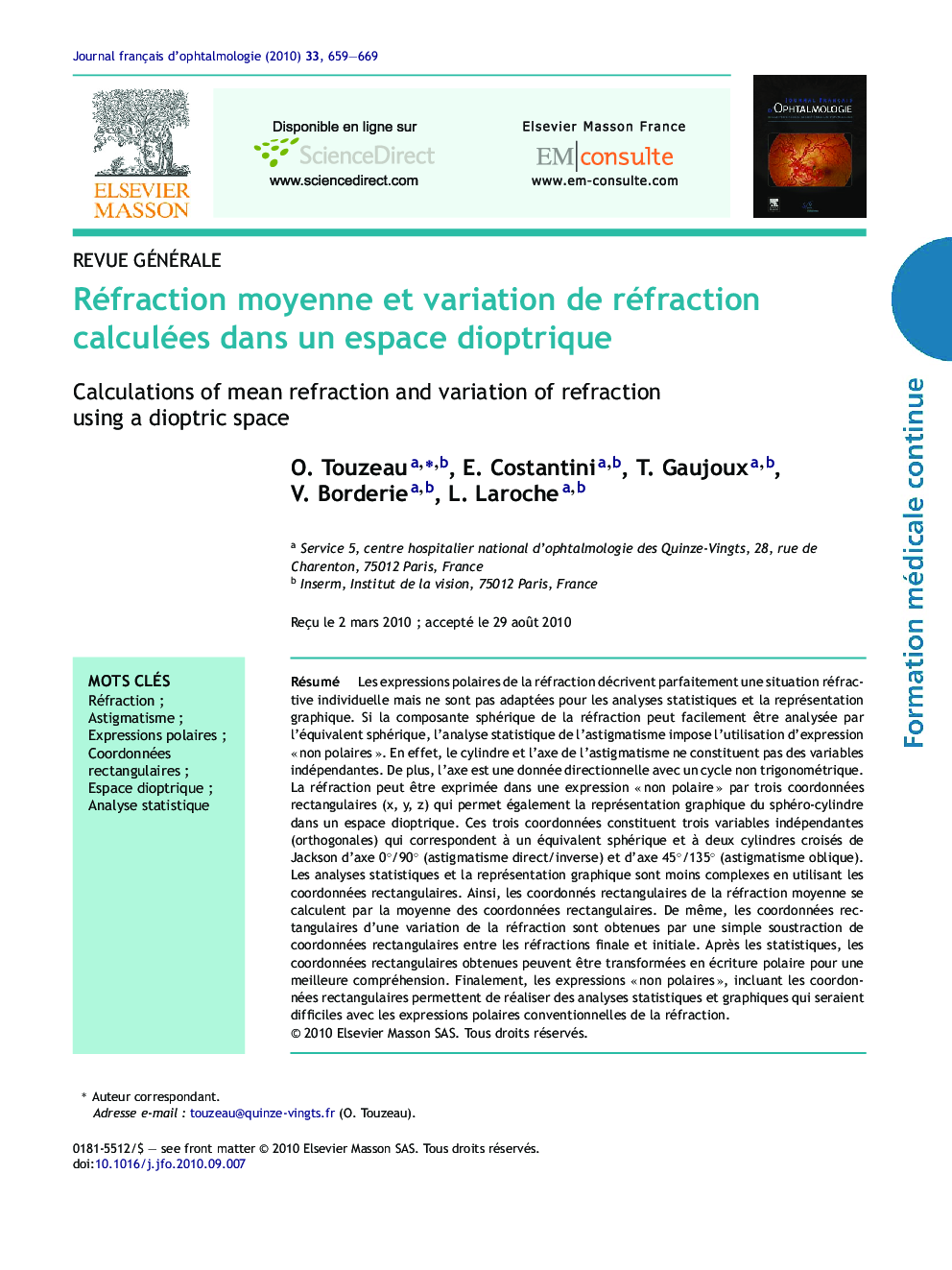| Article ID | Journal | Published Year | Pages | File Type |
|---|---|---|---|---|
| 4023929 | Journal Français d'Ophtalmologie | 2010 | 11 Pages |
Abstract
Polar notations (sphere, cylinder, and axis) of refraction perfectly characterize a single refraction but are not suitable for statistical analysis or graphic representation. While the spherical component of refraction can be easily analyzed by the spherical equivalent, statistical analysis of astigmatism requires non-polar expressions of refraction. Indeed, the cylinder and axis of astigmatism are not independent data. In addition, axis is a directional data including a non-trigonometric cycle. Refraction can be written in a non-polar notation by three rectangular coordinates (x, y, z), which can also represent the spherocylinder by one point in a dioptric space. These three coordinates constitute three independent (orthogonal) variables that correspond to a sphere-equivalent component and a pair of Jackson cross-cylinder components, oriented at 0°/90° (WTR/ATR astigmatism) and 45°/135° (oblique astigmatism). Statistical analysis and graphical representation become less complicated when using rectangular coordinates of refraction. Rectangular coordinates of the mean refraction are obtained by average rectangular coordinates. Similarly, rectangular coordinates of refraction change are obtained by a single subtraction of rectangular coordinates between the final and initial refractions. After statistical analysis, the rectangular coordinates obtained can be converted into a polar form for a more easily understood result. Finally, non-polar notations including rectangular coordinates are useful for statistical and graphical analysis, which would be difficult with only conventional polar notations of refraction.
Related Topics
Health Sciences
Medicine and Dentistry
Ophthalmology
Authors
O. Touzeau, E. Costantini, T. Gaujoux, V. Borderie, L. Laroche,
